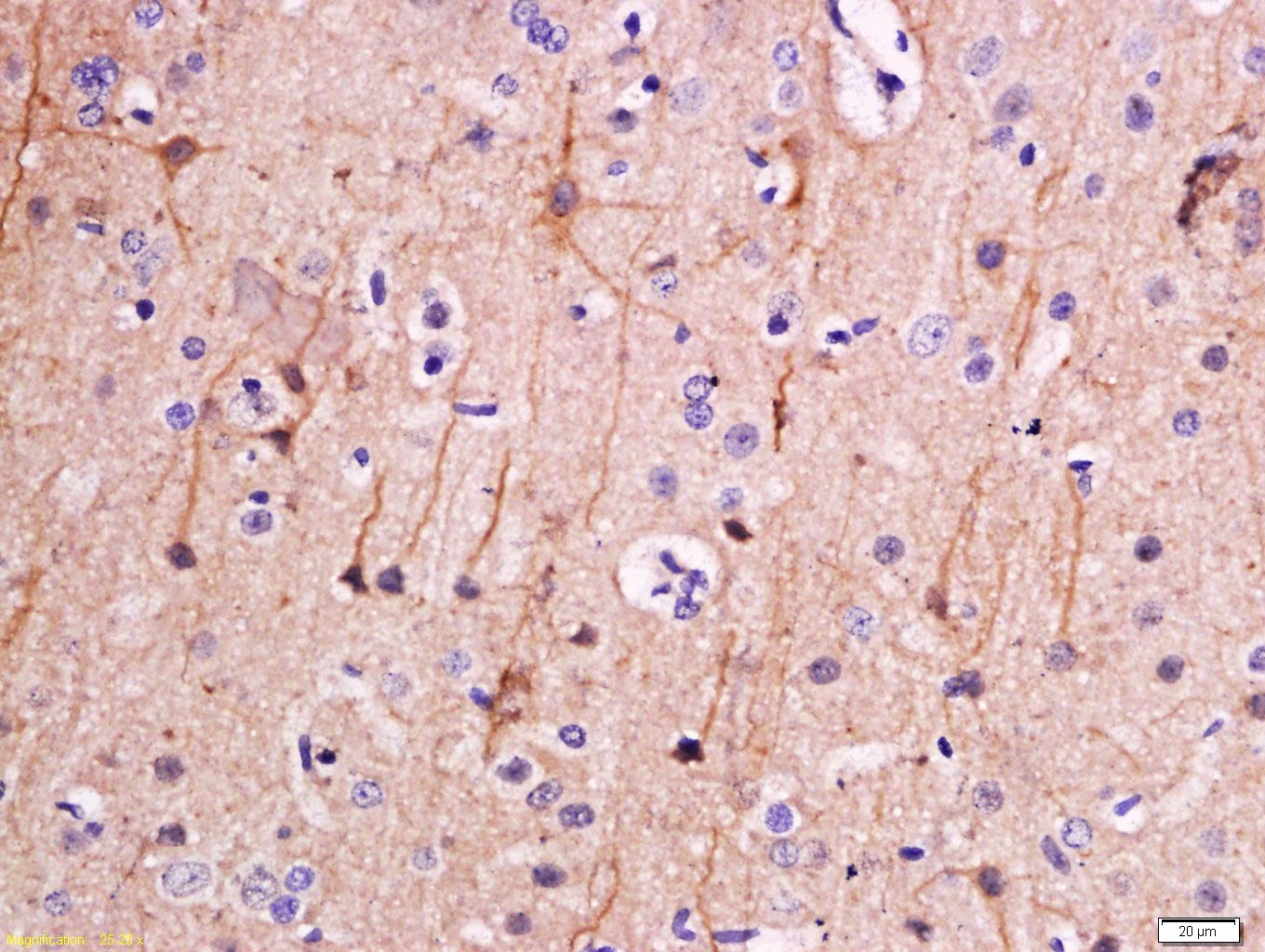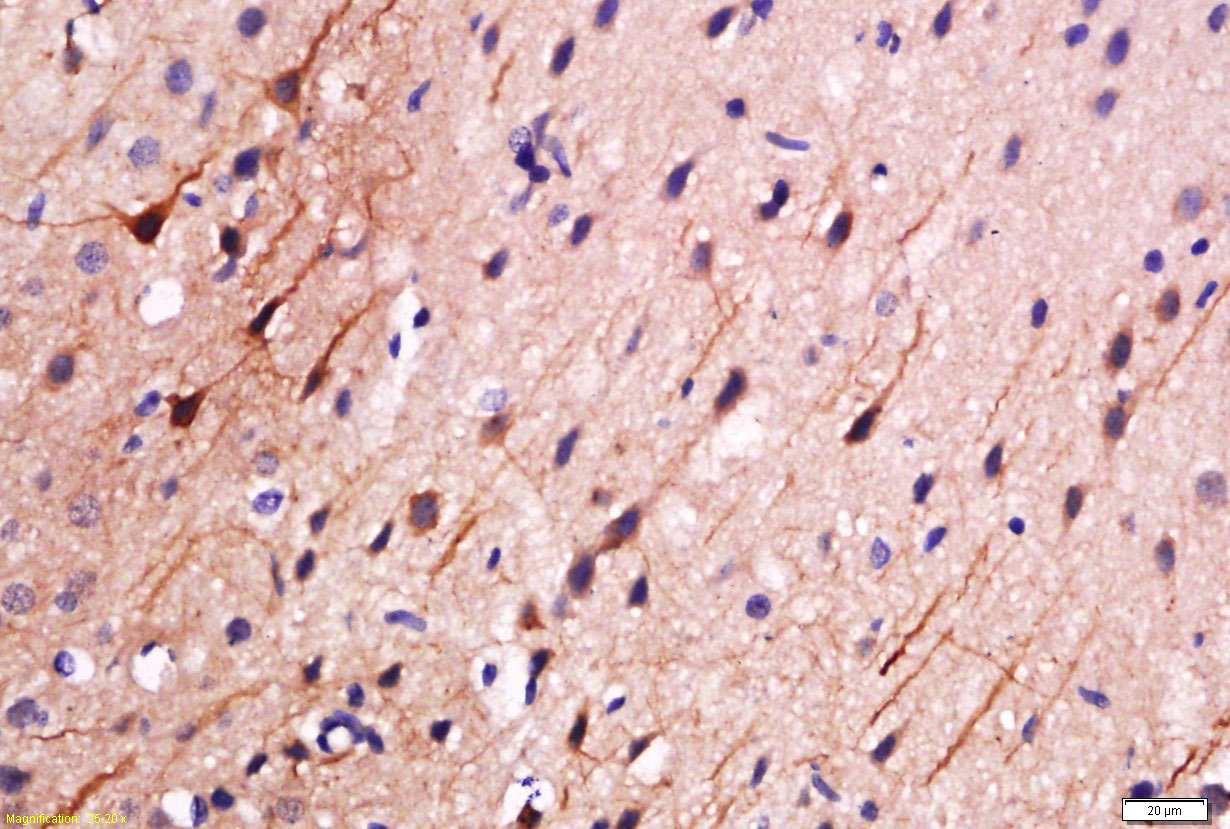
Rabbit Anti-Phospho-PEA15 (Ser116)antibody
PEA15(Phospho Ser116); PEA15 (Phospho S116); p-PEA15 (116); Astrocytic phosphoprotein PEA 15; Astrocytic phosphoprotein PEA15; HMAT 1; HMAT1; Homolog of mouse MAT 1 oncogene; Homolog of mouse MAT1 oncogene; HUMMAT 1H; HUMMAT1H; MAT 1; MAT 1H; MAT1; MAT1H;
View History [Clear]
Details
Product Name Phospho-PEA15 (Ser116) Chinese Name 磷酸化星形胶质细胞PEA15抗体 Alias PEA15(Phospho Ser116); PEA15 (Phospho S116); p-PEA15 (116); Astrocytic phosphoprotein PEA 15; Astrocytic phosphoprotein PEA15; HMAT 1; HMAT1; Homolog of mouse MAT 1 oncogene; Homolog of mouse MAT1 oncogene; HUMMAT 1H; HUMMAT1H; MAT 1; MAT 1H; MAT1; MAT1H; PEA 15; PEA-15; PEA15 protein; PED; Phosphoprotein enriched in astrocytes 15; Phosphoprotein enriched in astrocytes 15kD; Phosphoprotein enriched in diabetes. Product Type Phosphorylated anti Research Area immunology Neurobiology Signal transduction transcriptional regulatory factor Kinases and Phosphatases Immunogen Species Rabbit Clonality Polyclonal React Species Rat, (predicted: Human, Mouse, Dog, Cow, Rabbit, ) Applications ELISA=1:5000-10000 IHC-P=1:100-500 IHC-F=1:100-500 IF=1:100-500 (Paraffin sections need antigen repair)
not yet tested in other applications.
optimal dilutions/concentrations should be determined by the end user.Theoretical molecular weight 15kDa Cellular localization cytoplasmic Form Liquid Concentration 1mg/ml immunogen KLH conjugated Synthesised phosphopeptide derived from human PEA15 around the phosphorylation site of Ser116: QP(p-S)EE Lsotype IgG Purification affinity purified by Protein A Buffer Solution 0.01M TBS(pH7.4) with 1% BSA, 0.03% Proclin300 and 50% Glycerol. Storage Shipped at 4℃. Store at -20 °C for one year. Avoid repeated freeze/thaw cycles. Attention This product as supplied is intended for research use only, not for use in human, therapeutic or diagnostic applications. PubMed PubMed Product Detail PED/PEA 15 (Phosphoprotein Enriched in Diabetes/Phosphoprotein Enriched in Astrocytes 15 kDa) is a widely expressed 15 kDa protein comprised of an N terminal region containing a canonical Death Effector Domain (DED) sequence and a nuclear export signal, and a C terminal region containing two serine phosphorylation sites. PED/PEA 15 has been implicated in the regulation of multiple cellular processes including apoptosis, integrin activation, and insulin sensitive glucose transport in insulin responsive cells. Phosphorylation of both serine 104 (a Protein Kinase C site) and serine 116 (a substrate of CaMKII and Akt) is required for PED/PEA 15 function.
Function:
Blocks Ras-mediated inhibition of integrin activation and modulates the ERK MAP kinase cascade. Inhibits RPS6KA3 activities by retaining it in the cytoplasm (By similarity). Inhibits both TNFRSF6- and TNFRSF1A-mediated CASP8 activity and apoptosis. Regulates glucose transport by controlling both the content of SLC2A1 glucose transporters on the plasma membrane and the insulin-dependent trafficking of SLC2A4 from the cell interior to the surface.
Subunit:
Binds RPS6KA3, MAPK3 and MAPK1. Transient interaction with PLD1 and PLD2 (By similarity). Interacts with CASP8 and FADD.
Subcellular Location:
Cytoplasm.
Tissue Specificity:
Ubiquitously expressed.
Post-translational modifications:
Phosphorylated by protein kinase C and calcium-calmodulin-dependent protein kinase. These phosphorylation events are modulated by neurotransmitters or hormones.
Similarity:
Contains 1 DED (death effector) domain.
SWISS:
Q15121
Gene ID:
8682
Database links:Entrez Gene: 8682 Human
Entrez Gene: 18611 Mouse
Omim: 603434 Human
SwissProt: Q15121 Human
SwissProt: Q62048 Mouse
Unigene: 517216 Human
Unigene: 544 Mouse
Product Picture
Antigen retrieval: citrate buffer ( 0.01M, pH 6.0 ), Boiling bathing for 15min; Block endogenous peroxidase by 3% Hydrogen peroxide for 30min; Blocking buffer (normal goat serum,C-0005) at 37℃ for 20 min;
Incubation: Anti-Phospho-PEA15(Ser116) Polyclonal Antibody, Unconjugated(SL3329R) 1:200, overnight at 4°C, followed by conjugation to the secondary antibody(SP-0023) and DAB(C-0010) staining
Tissue/cell: rat brain tissue; 4% Paraformaldehyde-fixed and paraffin-embedded;
Antigen retrieval: citrate buffer ( 0.01M, pH 6.0 ), Boiling bathing for 15min; Block endogenous peroxidase by 3% Hydrogen peroxide for 30min; Blocking buffer (normal goat serum,C-0005) at 37℃ for 20 min;
Incubation: Anti-Phospho-PEA15(Ser116) Polyclonal Antibody, Unconjugated(SL3329R) 1:200, overnight at 4°C, followed by conjugation to the secondary antibody(SP-0023) and DAB(C-0010) staining
Bought notes(bought amounts latest0)
No one bought this product
User Comment(Total0User Comment Num)
- No comment




 +86 571 56623320
+86 571 56623320
 +86 18668110335
+86 18668110335

